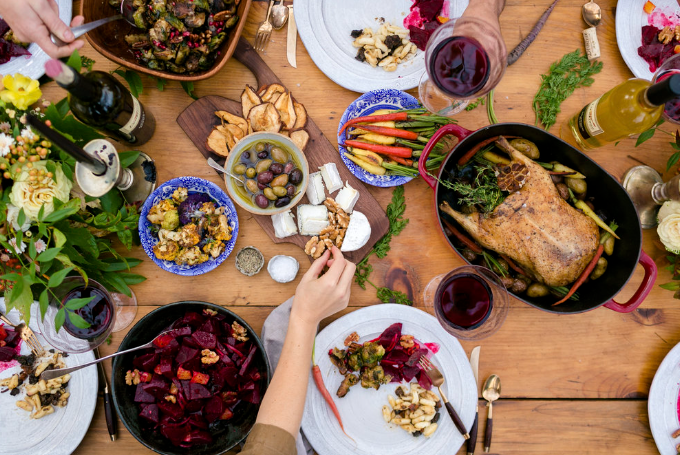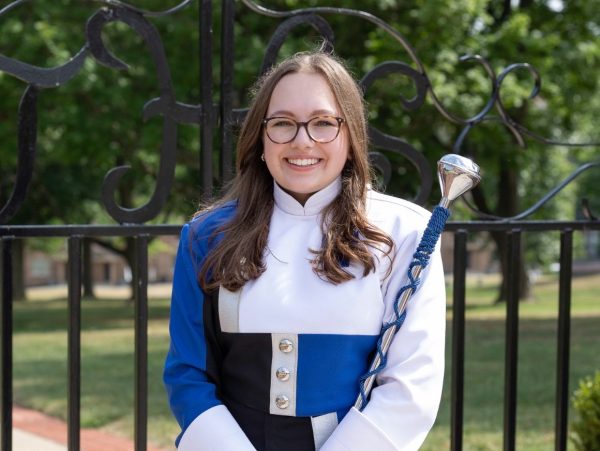Exploring origins of Thanksgiving food traditions
This image was accessed via Google Images under the Creative Commons License.
Pictured is a traditional Thanksgiving spread. At this particular meal, the foods are served “family style,” meaning that everything is presented at the dining table and passed around. This is how the majority of Americans serve their holiday feasts.
Thanksgiving is a beloved holiday that Americans celebrate and look forward to each year. However, some are unaware of the deep history and traditions that Thanksgiving was founded on, especially the traditions of the foods themselves.
Most American Thanksgiving meals consist of the same general dishes.
Sophomore Rogan Cavanaugh usually eats the foods like “stuffing, corn, green beans and of course, turkey,” that are often considered conventional Thanksgiving foods.
But where did these traditional fares originate?
The pilgrims arrived in Plymouth, Massachusetts, in November of 1620. The first Thanksgiving celebration occurred in November of 1621, marking the pilgrims’ first full year in the new world.
The dining table at the first Thanksgiving banquet was filled with dishes that seem uncommon compared to what many Americans have grown accustomed to over the years. While it’s true that turkey was a commonly eaten animal during that time, ducks and swans are reported to also have been eaten at the meal. Deer were also served at the table, as they have been and still are heavily populated in the northeastern regions of America.
An unexpected main course that was presumably at the table was different types of seafood such as lobsters, mussels and fish. New England is known for their seafood today, so it only makes sense that it was eaten by the English settlers and Native Americans on their first Thanksgiving feast.
Similar to now, the pilgrims prepared many of their crops that they had grown throughout the course of the spring and summer such as onions, carrots, beans, spinach and lettuce.
There are no records of the popular side dishes, mashed potatoes and stuffing, also referred to as “dressing,” being at the first Thanksgiving. Mashed potatoes were added into the meal around 1790. Stuffing became part of the feast in the 1830s. However, people had been stuffing their game with other herbs and vegetables for a number of years before that.
Disappointingly, pies were not eaten because there were not enough extra resources to create pie crust. However, settlers utilized pumpkins and other gourds as cooking bowls to make homemade custard for dessert instead of pie, which is a customary dessert at American Thanksgiving meals today. However, the desserts earned their spot at the table in the 19th century and were most commonly filled with pumpkin!
It’s safe to say that the foods served on Thanksgiving are rooted in extensive tradition that won’t be leaving the homes of Americans any time soon. As much as the holiday is a great time to chow down on all of the best foods for a day, it’s also an opportunity to gather with family and friends to celebrate the many fortunes taken for granted throughout the year.
Junior Nathan Sander and Sophomore Zoe Kumpfmiller say that they both look forward to celebrating with their families even more than they look forward to the food.
This Thanksgiving, take a look at the plates, and think of the history of the foods instead of how good they taste. Never forget the true history and meaning of the day!
Abby is a senior and is super excited to be on the newspaper staff this year! When not in school, she enjoys playing guitar, performing in and writing...






